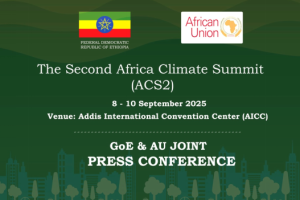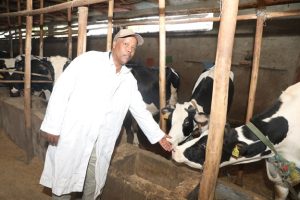BY GETACHEW MINAS
One of the environmental and climate challenges of developing countries is absence of appropriate policy and working procedure to the disposal of wastes. While technology and finance are formidable challenges for the fledgling economies of this part of the world, operationalization of a workable policy and strategy to disposal, reuse or recycling of waste is also a good approach to significantly address the problem.
Recycling is the action or process of converting waste into reusable material. The recycling sector in Ethiopia is characterized by informality and lack of raw materials. Studies reveal that the country has a general shortage of raw materials due to lack of sufficiently exploited resources. It also faces technological gaps for exploration of natural resources for use in various economic sectors. The productive sector mainly depends on the import of raw materials. Import of raw materials may be hampered by shortage of foreign exchange. This shortage had also been triggered by the TPLF business tycoons who had misused available foreign exchange. They also inflated transportation costs that led to high domestic prices that were much higher than the international market prices. This situation had caused shortages that have led to intensive recycling of household waste and raw materials in the country.
Studies revealed that there was an “informal” recycling system in place in Ethiopia. It was one of the highest recycling sectors in East and Central Africa. Aside from the recycling of household waste, the reuse of industrial waste in the production of plastic items is very common. Most production sites have grinders to process the leftovers of production into reusable material. Some of the industrial waste was exported by the TPLF businesses to earn foreign currency. The main reason for this was lack of technology for treating wastes that could be processed into raw materials that can be reused in production. The TPLF enterprises used metal scraps for reinforcement bars and thermoplastics for marketable household wares.
Initially, the TPLF had no laws, which directly regulate recycling or restrict the use of recycled materials in Ethiopia. However, certain materials used for food packaging were checked by laboratories for toxic substances. This was required by international standards when using recycled materials. The handling of solid waste was regulated by a recent proclamation that empowered the concerned government agency. The responsibility of the agency was passed down to the lowest administrative levels of the local governments. The responsibility was not only restricted to plastic, paper, glass, and metals, but also to biomass, textiles, rubber, silt, ash, dust and waste oil, since the demand for these raw materials was high. However, the application of recycling technology is still a “challenge.”
Urban waste is mostly collected from hotels and restaurants. The “informal” collectors sell the waste to middlemen, who supply the recycling companies with the materials. The informal sector is loosely organized but the collectors get better price for the raw material. It is reported that several informal collectors died on a landfill near Addis Ababa due to a big “landslide” of waste. Recycling is directly promoted through high prices for the informal sector operation and indirectly encouraged by the beneficiaries. Some of the policies promote recycling by providing incentives, such as tax exemptions, which the TPLF businesses enjoyed as end users.
Services of start-ups, mostly founded by the youth engaged in the recycling sector are tax free. This is an extension of the policy for employment by promoting micro and small enterprises (MSE). Recyclers organized as MSE are encouraged and supported by public agencies through training that offer technical know-how and literature. Also private households and public partners participate in the waste collection. The proclamation on solid waste partly prohibits the “import” of waste with some exceptions for those with sustainable treatment of materials. Ethiopia does not allow the import of red, yellow or green listed waste from other countries. It has also introduced an extended “producer” responsibility on producers and importers of tin cans and glass containers.
The importers are responsible for the “return” of their waste products that have to be recycled. Unfortunately, these laws are “poorly” implemented by the TPLF functionaries that exploited the MSE engaged in recycled materials. Only six out of ten regions have established regional environmental authorities until recently. These authorities lack strategies for implementation due to a shortage of experience, unskilled staff and inefficient organization. In practice, municipal waste is collected by the municipal waste management unit and brought to landfills. It consists mainly of organic waste with small amounts of plastic, paper and metal waste. The recycling of municipal waste is executed by the informal sector. These include informal collectors that gather from streets all kinds of materials for recycling.
The plastic industry in Ethiopia is growing fast to meet demand for its product. The consumption of plastic products is increasing in double digits annually in the last two decades. The TPLF benefitted from the plastic industry that tripled in total production. The main business sectors responsible for that are the packaging, the construction and automotive firms. The lack of domestic resources and technology for plastic materials makes Ethiopia dependent on imported plastic raw materials. It also imports packaging and printing machines. The total imported plastic raw material was estimated to be thousands of tons. Recycled plastic raw materials are only utilized in the production of household wares. However, depending on their prior use they could be easily utilized in the construction sector. It is on record that recycled plastic materials can emit toxic substances.
The most common uses of plastic material would be for irrigation water pipes, cable conduits or insulation panels. Informal recyclers, controlled by the TPLF junta, gathered plastic bottles with good qualities, but occasionally suffered from inappropriate storage in bright “sunlight.” Most of the material had light blue color, due to previous use as water bottles. Currently the estimated number of recyclers in Ethiopia is around ten. The bottles were mainly recycled in a cold wash process, while higher quality bottles were obtained using hot water washing. The latter ones were not used in the “domestic” production, but were exported to generate foreign currency, pocketed by the junta.
Domestic recycling of materials was difficult due to a lack of appropriate technology and experience. This was aggravated by shortage of investment and the crunch of foreign exchange for the sector. The recycled materials also suffered from high costs of transportation. Added to this was the shortage of recyclers to convert chips that could be used in the production of plastic materials again. Considering how fast the textile economy was growing and that water companies in the market were selling around billions of bottles of water per year, there was a high “potential” for recycled plastic in the local market.
Imported recycled materials in Ethiopia were used for packaging, automotive, construction, electrical, electronics and telecom sectors. The material could be collected in good qualities while all other thermoplastic materials were picked from the ground. Most of the common scraps and leftovers were also picked from the ground. Unfortunately, these materials could only be separated by trial and error procedure, as there was no technology used for separating the materials. There were no modern sorting techniques available in Ethiopia yet. The “mixed” recycled materials were impure and could not be exported due to lack of quality. These recycled materials were used “domestically” in the production of household wares.
Limitations in the use of the recycled material were its blurred color and low quality. It was very difficult to obtain “colorless” or white recycled materials in Ethiopia in sufficient qualities and quantities. The TPLF recyclers had used plastic material which was a mixed leftover of the processed thermoplastics. The materials were sold at cheaper market prices. Studies indicated that these prices strongly depended on the availability of foreign exchange and could vary greatly within short time spans. Prices for quality materials were very expensive and were on the rise.
Apart from recycling of thermoplastics there were efforts to reuse rubber from “used tires.” Initially, the junta firms had specialized in fixing small damages and selling the repaired tires. If damages were beyond repair, the tires were shredded to chips. These were used as fuel in energy consuming productions like cement.
Studies indicated that the recycling sector in Ethiopia was run by joint ventures between local and foreign firms. COBA Impact Manufacturing PLC, for example, is a joint venture between a local firm and a Swiss company, engaged in bottle crates, wooden cases manufacturing in Ethiopia. It supplies almost the entire local beverage industry with bottle crates. Major users are, for example, SABCO Coca Cola, SAB Miller, BGI (Castel Group), Heineken, Diageo and other local producers. COBA Impact intends to produce for flat water and carbonated soft drinks. It also intends to collect and recycle reusable chips for export markets. The company has announced the opening of the first collection center for plastic bottles in Legetafo, near Addis Ababa, run and owned entirely by new local entrepreneurs. There is an increase in the use of plastic bottles in Ethiopia, where users throw them away as garbage.
In Ethiopia paper recycling is mostly done in the same way as plastic-recycling. Paper is sorted and processed into pulp and then exported to generate foreign exchange. There are “only a few” paper recycling companies in Ethiopia, like Penda Paper or Suzo PLC due to lack of technology, investments and experience. The use of recycled paper, whether for printing paper or as sanitary products, is not common. The largest portion of paper in the country is “imported” from abroad, leading to price increases in cardboard and other paper products. Ethiopia imports raw materials for the paper industry every year. Currently thousands of tons of paper and carton are dumped at landfills, burned or simply left as garbage on the streets. This is a great “waste of resources.”
Metal recycling is the main activity of the metal industry that can be categorized into basic steel and engineering parts. The former produces reinforcement bars from raw materials, while the latter produces more engineering items from stainless steel, including machine parts and modifications. The steel industry in Ethiopia comprises of several firms with thousands of employees. They have the capacity of producing millions of tons of steel annually. They are producing steel at about half of their capacity. The main reason for this is the shortage of imported raw materials due to lack of foreign exchange. This has led to high prices that made domestic metal recycling very attractive for the TPLF business tycoons.
The main challenge for the recycling sector in Ethiopia is waste segregation and low recycling rates. The effort to collect metal and paper wastes by the informal collectors is immense, but has been dominated by the TPLF junta. The largest metal sector is recycled steel that is only used to produce reinforcement bars. Increased production capacity of reinforcement bars contributes to the fast economic development of the country. The recycling sector should be given support by the government as it is a major earner of foreign exchange.
The Ethiopian Herald September 30/2021




